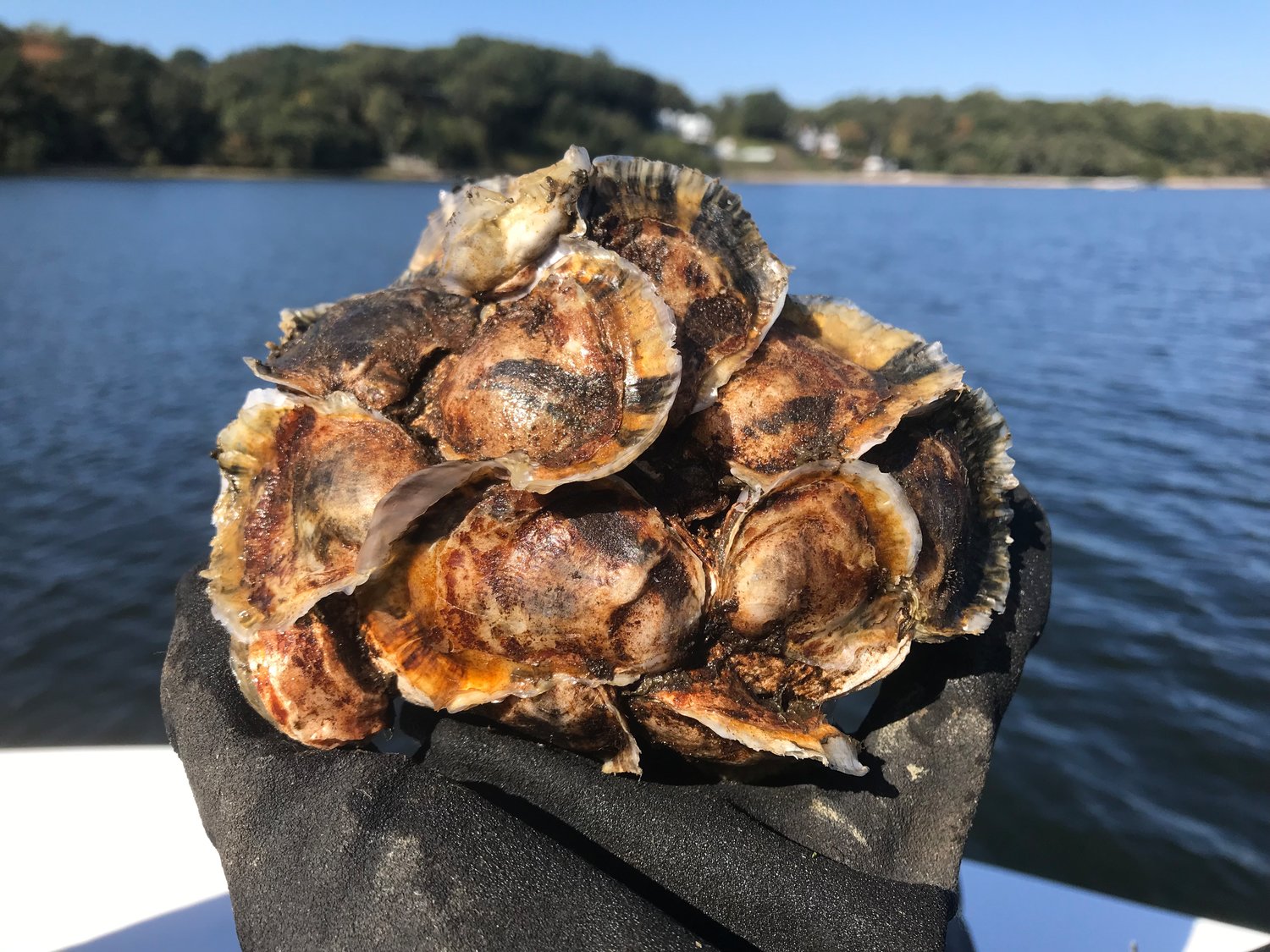Coalition’s community oyster garden succeeds without a hitch
The Coalition to Save Hempstead Harbor’s community oyster gardening program has just finished its first year, and according to all participants, it was a resounding success.
The CSHH successfully raised approximately 30,000 spat-on-shell oyster, half of which were released in Hempstead Harbor, while the other 15,000 were distributed in Cold Spring Harbor.
The program, launched on July 19, marked the first time the state Department of Environmental Conservation approved the release of spat-on-shell oysters in Hempstead Harbor. The oysters were placed in a part of the harbor designated as a “conservation management area,” where the burgeoning oyster community will be able to continue to expand.
Lisa Cashman, associate director of the coalition, explained that the initial license with the DEC called for all of the oysters to be deposited in Cold Spring Harbor. However, the coalition was able to find a suitable location in Hempstead Harbor, and the town and the DEC agreed to let half the shellfish remain local.
“The DEC controls where oysters go very closely, because if there’s too much bacteria in the water they’re not safe for human consumption,” Cashman said. “But things were going so well we got approval from the DEC to put half of the oysters that we raised this year into this conservation management area.”
The oysters arrived as spat, or larvae which have permanently attached to a shell or surface, and measured only .32 inches on average. They were put in cages alongside docks at the Tappen Marina, Sea Cliff Yacht Club and the Hempstead Harbour Club. Once every two weeks they were taken out, had the mud and detritus cleaned off and measured.
The cleaning and measuring was done largely through the work of over community 30 volunteers, who worked throughout the summer inspecting the developing oysters.
Kristie Leigh, who volunteered along with her daughter Sophie, said that the experience was amazing. Leigh went into the program with little knowledge of oysters or marine life, but she says she learned a lot about not just oysters, but Long Island’s aquatic wildlife in general while cleaning the shellfish. She said that it was a great experience for her daughter, an eighth grader interested in marine biology.
“It was messier than I thought it was gonna be, although I don’t mind the mess, but it was really fun and it was great to see the oysters from when they first got here all the way until the end when they were getting pretty big,” Leigh said. “It was really fun, although messy, and super educational and it really left me with a much greater appreciation for oysters.”
The oysters managed to grow four times their initial length in only three months, which is about average according to the Coalition’s Environmental Monitor Martha Braun. There were no unexpected challenges or threats to the oysters, such as parasites or predators, and the pilot program provided a great chance to gather data and potentially expand the project in the future.
“It was pretty smooth sailing. There weren’t really any huge surprises,” Braun said. “The whole process was just a learning experience, but it was a successful one.”
While nothing has been decided, the Coalition is hoping to expand the number of oysters and volunteers they can oversee next year, as well as potentially raising the shellfish in even more locations. The project was conducted through community support, and if anyone wants to continue to support the Coalition’s efforts, they can do so on organization’s website, coalitiontosavehempsteadharbor.org.

 68.0°,
Fog/Mist
68.0°,
Fog/Mist 




